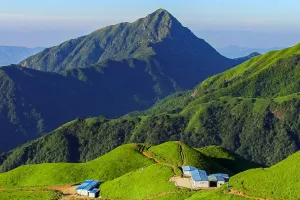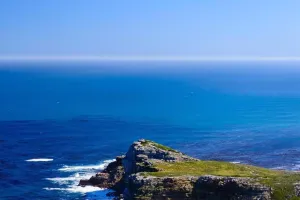Cloud refers to a collection of water droplets in the atmosphere. When the water in the river and the lake is irradiated by the sun, it will continue to evaporate to turn into water vapor and float in the air.
The density of water vapor is far less than air, so it will slowly rise to the sky. When these air -steaming air heat up to a certain height, when it encounters cold air, it will condense into a small drip of floating water, and we call them clouds.
Relatively speaking, the height of the cloud layer is determined by its composition, which is mainly related to density. When its density is small, it rises due to the buoyancy of the atmosphere.
However, when rising, it will encounter cooling, causing some water and gas to condense into water, rising density, and causing height to decrease. When a critical amount is reached, the clouds are suspended in the air.
Many people think that clouds are very light objects because it looks as fluffy as a marshmallow. In other words, clouds may be the same object as air, so they can float in the sky.
From a physical perspective, all objects will have buoyancy in the air, and the size of the buoyancy is equivalent to the weight of the air that is discharged by itself.
If the weight of the air is smaller than its own weight, it will rise. In short, the density of this object is less than air, and it will rise. The density of the air is 1.29 kg/cubic meter.
If the density of the object is smaller than the air, it can completely float in the sky by buoyancy.
We often see clouds with different colors in the sky. Why is this?
The thickness of the cloud determines the color. The thickness of the various clouds we see is very large, the thickness can reach seven or eight kilometers, and the thin ones are only tens of meters.
During the sunset, because the solar light was oblique, the molecules, water vapor, and impurities of the air caused a large number of short waves of light to scatter.
However, the red and orange long wave parts are not scattered. As a result, when it is illuminated by the atmosphere, the long wave light occupies an absolute majority.
At this time, not only the sky at the sunset is red, but the bottom of the clouds became red.
Because the composition of the cloud is water droplets, some are ice crystals, and some are mixed with the two. Therefore, when the sun is passed, it sometimes causes a variety of beautiful halos or rainbows.
From the outside, clouds are protective layers on the earth. The cloud can hinder the radiation of the solar light, reduce the temperature of the earth's atmosphere, and make the summer of the earth not too hot.
It can also reflect the radiation heat on the earth, increase the temperature on the earth, and make the earth not too cold in winter.
From a global perspective, clouds can change the global climate. Increasing clouds will accelerate the warmth of the Arctic Circle, resulting in the melting of the Arctic sea ice and turning into more ice.
This will accumulate a lot of fresh water on the surface of the North Atlantic Ocean, suppress the downward movement of the sea, weaken the composition of deep water in the North Atlantic Ocean, slow down the sea conveyor belt, and reduce the warm water on the surface of the deep sea.


